
Bilim App: A Health
Tech Solution
How Mad Devs helped the Turkmen non-profit initiative Saglyk
(saglyk means health in Turkmen) enhance Bilim,
a health app for women and girls

The non-profit program Saglyk recognizes the importance of women’s health awareness. While working on a program to expand health education, Saglyk chose Mad Devs as a development company because our team knows the value of HealthTech software solutions. We had to improve and maintain a new mobile app for tracking periods/menstruation. Saglyk aims to help women and girls easily monitor their cycles and be better informed about health issues so they can focus on what matters most: their health and their rights. The Bilim app is the first health app in the Turkmen language.
The first and only women's health and wellness app in the Turkmen language
Behind the Project
Since 2009, Saglyk has provided comprehensive public health information on its website. Saglyk aims to promote a healthy family, community, and environment. They develop health literacy and public engagement around health issues in Turkmenistan, including environmental health.

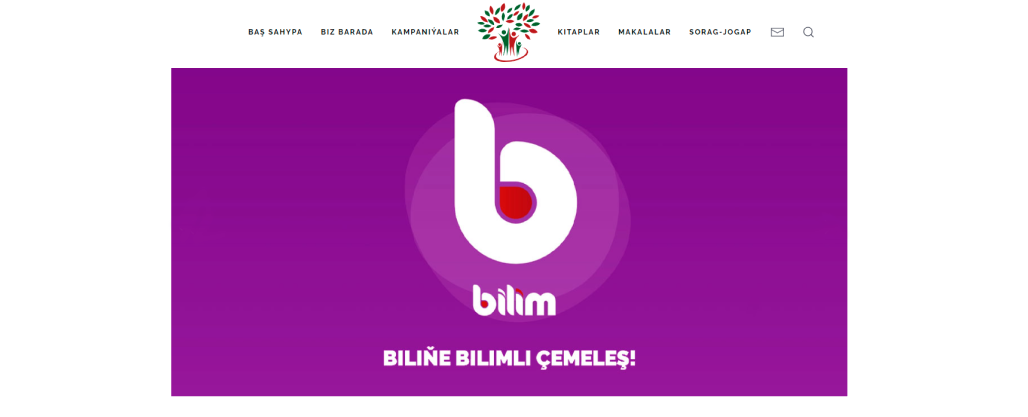
Image from the official site
To help the women of Turkmenistan take care of their health, Saglyk created the Bilim app. According to expert forecasts for 2022, 6.16 million people live in Turkmenistan, and 50.8% of them are women. The application’s target audience is reproductive-aged women (between roughly 15 and 50 years of age) who primarily speak Turkmen.
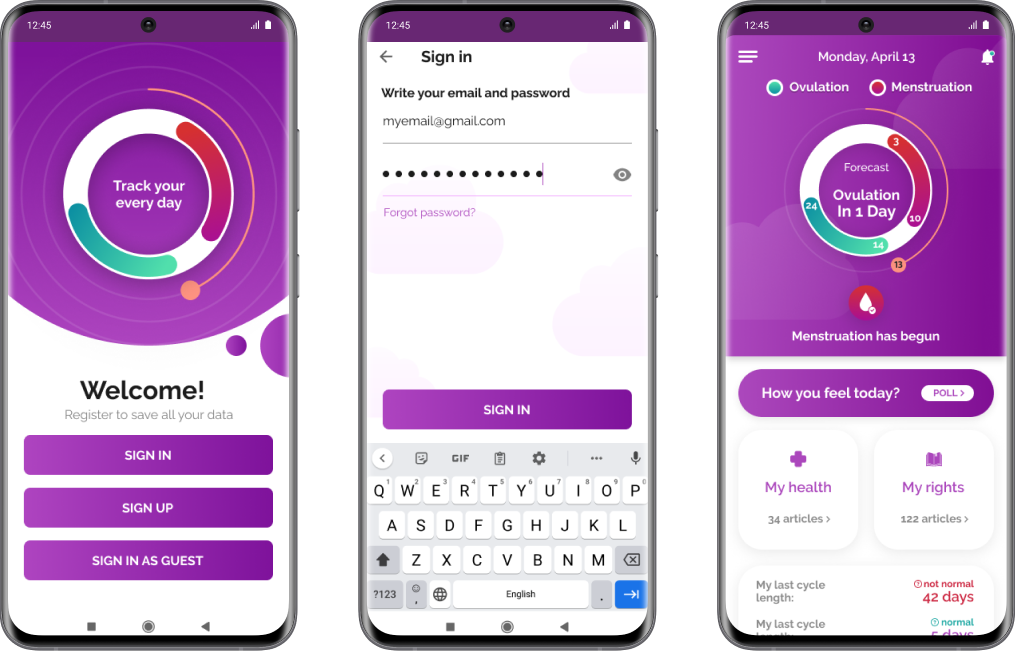
Images from the Google Play Market
Educating women about their health and rights is challenging because many factors must be considered, such as education levels, cultural and religious traditions, and social environments. Therefore, it is important to use accurate vocabulary and to be careful in handling culturally taboo and sensitive topics. The app is only available in the Turkmen language because Russian-speaking Turkmen have access to apps in Russian. With these factors in mind, Saglyk developed the first version of the Bilim app. However, with time, they faced problems that required reaching out to other development companies.
The first version of the application looked much like other period tracker apps, but Saglyk wanted to scale up and improve the application. They wanted to partner with a company whose already established processes could take this project to the next level and transform into a turnkey project. They organized a tender for software companies to decide who would be involved in this project. From all the applicants, Saglyk chose Mad Devs because their team offered detailed terms, an understanding of the country, and proven qualifications before starting the revamping process.
The Challenges Mad Devs Faced
When Mad Devs experts became involved in the project, Saglyk already had the first version of the application. The main challenges included:
Needing to develop new code, documentation, infrastructure, and feature updates to set up a proper project
Building a roadmap to turn stakeholders’ desires into tasks, create detailed technical tasks, and plan the execution of said tasks
Needing new features and updates
Turning a Plan Into Reality
The application’s end-users were residents of another country. As such, Mad Devs used the empathy map tool to deeply understand the stakeholders’ needs. The project manager organized interviews with stakeholders to understand the final users’ pains and gains, their environment, and their behaviors. Together with the stakeholders, Mad Devs collected data and produced a project roadmap that defined the goals and objectives of the project to make the process efficient.
Transparency and Management
A fundamental principle of Mad Devs’ project development and communication style is transparency, both internally and with clients. Their flexible methods and transparency keep the project team engaged and allow for relevant adjustments at any time. Every project detail is made clear, and the Mad Devs team is always reachable via email, Slack, or Jira.
Since the Bilim app is not a commercial project, funding is limited. Therefore, one of the stakeholders’ requirements was to implement as many no-cost (but still reliable) tools as possible. After the application analysis, our developers created a set of tools that met requests and ensured the sustainable and efficient operation of the application.
We divided the process into sprints—or smaller and more achievable tasks—to ensure that a high-quality product was delivered on time. To maintain transparency in the face of asynchronous communication, we connected the Enji bot to the project’s Slack channel and Jira. Enji provides a real-time overview of the entire project by collecting data from Jira, analyzing it, and sending timely notifications in Slack. This created direct communication lines and reduced the risk of misunderstandings.
The team’s mission was to make the Bilim application convenient and functional for both final users and application administrators. There were four main goals:
Update & upgrade the application backend.
Create opportunities for content management, storing user data, collecting end-user feedback, and recovering user data.
Improve existing features to detect and fix existing defects.
Develop a set of new requested features.
Technical Development
Mad Devs successfully met stakeholder requirements by updating the app from infrastructure development to backend and mobile development for their goals and purposes. The development process was as follows:
Infrastructure Development
One of the main goals was to switch the project from an old infrastructure to a new, fully automated infrastructure. In addition, Mad Devs updated the app’s infrastructure to make the project more sustainable.
- The team separated staging and production. Therefore, it became possible to implement and test changes or updates on stage before going live. This was made possible with Firebase Test Lab.
- The team changed the project infrastructure from an outdated hosting provider that was no longer available to a newly created infrastructure based on Digital Ocean droplets.
- The team conducted load testing to ensure that the application did not slow down due to increases in simultaneous server requests and to make infrastructure costs proportional.
Backend Development
The developed backend offers a wide range of valuable features, including the following:
- A Python Django Framework that allows project managers to have a ready-made admin panel to manage information and statistics and configure the application’s out-of-the-box features.
- The anonymous storage of users’ history using the Python Django Framework. Moreover, women can recover their data from any device after authorization.
- An advanced content editor. Since the Bilim app contains an extensive blog and the backend did not support a number of tools for text editing, we enabled WYSIWYG (What You See Is What You Get) editors so managers can easily update the content of the blog posts and adjust styling and paragraphs.

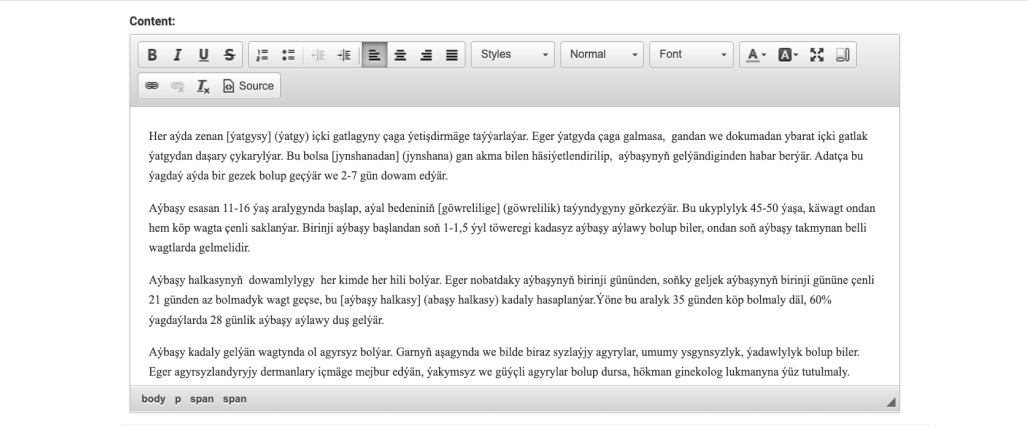
- A Postgres database system used for data storage.
- The setup of Google Analytics tools so admins can analyze data about users’ activity, engagement with articles and blog posts, click history, and account deletion.
- Management of surveys. Admins can collect users’ opinions of the application by sending surveys. Admins can create, draft, postpone, and send surveys to users through the backend. The user receives a notification on their home screen after the admin sends the survey.
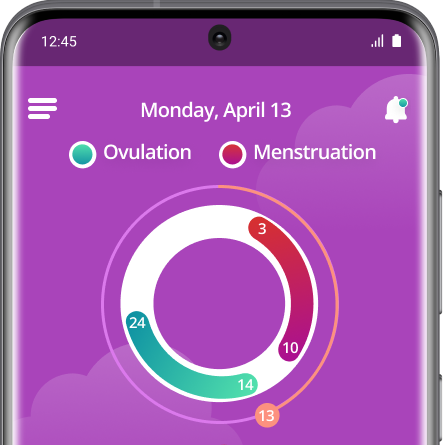
Notification on the main screen
- Quick error reports to tech support. Mad Devs integrated the Uptime Robot alerting tool for sending error notifications to project support.
Mobile Development
While working on the new version of the Bilim app, Mad Devs aimed to create workable, long-term solutions, and through the updates to the app, period tracking became easier. The updated app has the following mobile features:
- Firebase Auth, a proven and reliable technology that is easy to integrate into a mobile application, allows users to authorize their accounts quickly. In this way, users can provide authorization through an email address, a phone number, or a Google account. Digital literacy is often underdeveloped in Turkmenistan, so the goal was to make the authorization process simple and accessible for everyone.

Login screen
- Data synchronization is enabled. The previous version of the application was already running, but all data were stored locally, meaning that, unfortunately, data could be lost. After creating a new backend, it became possible to synchronize the data. The user can use the application without logging in, and the backend data will synchronize after authorization.
- Users can use the application in two ways: as an authorized user or as a guest. To keep users anonymous, they can use the application without authorization. Alternatively, they can use other authorization methods without the need to fill in any personal information. Each user is assigned a unique ID.
- The Firebase Crashlytics tool sends crash alerts to the tech support team. This tool automatically collects, analyzes, and organizes application crash reports, allowing developers to fix bugs promptly.
List of actual crashes
- A word highlighting feature makes articles easy to read and understand. This functionality was made through the backend, making it easier for the admins to link articles to a glossary. To read more about a highlighted word, a user can click on it and be redirected to the glossary entry.
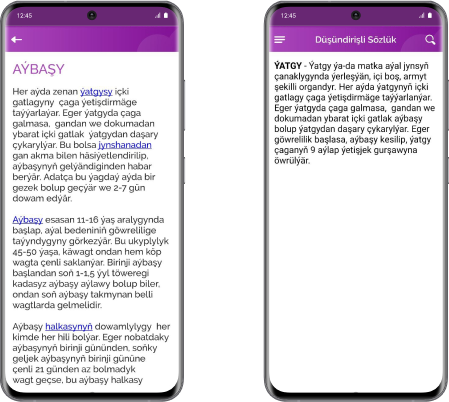
Word highlighting feature
- Backward compatibility allows current users to download newer app versions and not lose data.
Mad Devs collected all project documentation in GitLab and Atlassian Confluence to minimize the bus factor. Thus, Saglyk can use technical documents to refresh their knowledge of the product or process and explain to new team members how to navigate each step or challenge so that the next development team will not have to search for information themselves.
Results
After three months of application development, Mad Devs successfully released the new version of the Bilim app on the Google Play Store on Jun 22, 2022. During this time, sound development processes were established to take this project to the next level and make it a turnkey project. To reach all of Saglyk’s goals, Mad Devs upgraded the application backend, improved existing features, and fixed existing defects. Additionally, the team developed a set of new requested features. They created excellent opportunities for content management, storing user data, collecting end-user feedback, and recovering user data. To make the communication process smoother and more transparent, they united the team under one communication channel. For Mad Devs, it was a pleasure to contribute to Saglyk’s mission; likewise, Saglyk appreciated their professionalism.
Technologies Used for the Bilim App
Kotlin
Python
Django
Google Firebase
Locust
Digital Ocean
Gitlab
JIRA
Uptime Robot
PostgreSQL
Enji.ai
Google Analytics
Meet the team

Tony Fedorenko
Head of Delivery

Zhazgul Zuridinova
Project Manager

Faride Bagirova
Android Developer

Ivan Karpus
Android Tech Lead

Ilya Teremasov
Backend Developer

Vlada Arevkova
UI/UX designer

The Mad Devs team proved themselves to be a well-established company with agile tools and systems for smooth communication and management of the project. I collaborated with the team throughout the project by staying in touch with them. The team always worked on schedule and was able to deliver everything on time as they had promised. They were not only easy to approach and fun to work with, but also they took the project to their heart and were ready to discuss even the little bits and pieces we sometimes seemed to miss.


